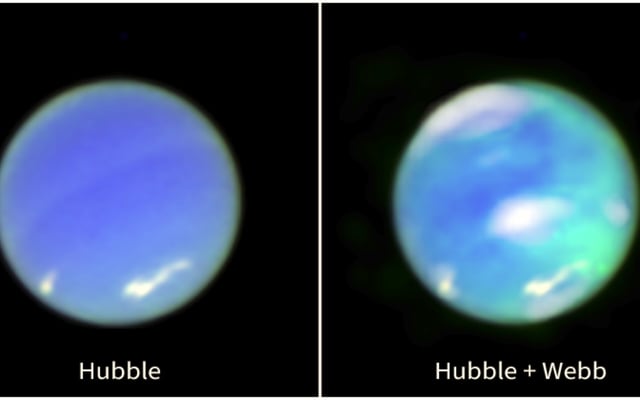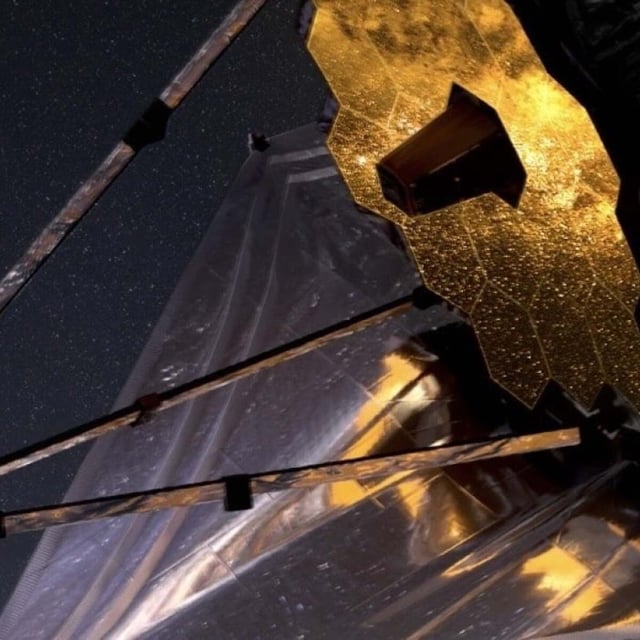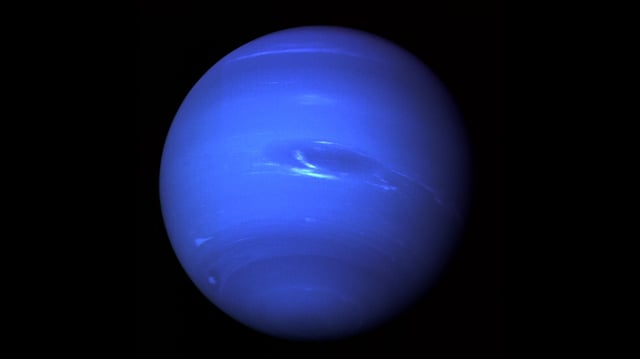Overview
- NASA's James Webb Space Telescope has provided the first-ever direct images of Neptune's auroras, captured using its Near-Infrared Spectrograph in June 2023.
- The auroras were found at Neptune's mid-latitudes, rather than the poles, due to its unusually tilted magnetic field, which is offset by 47 degrees from its rotational axis.
- Astronomers detected the molecule H3+, a key indicator of auroral activity, and measured a dramatic cooling of Neptune's upper atmosphere since the Voyager 2 flyby in 1989.
- The findings mark the completion of auroral observations on all giant planets in the solar system and open new avenues for studying Neptune's magnetic field and atmospheric dynamics.
- Researchers plan to use Webb to study Neptune over a full 11-year solar cycle, aiming to deepen understanding of its unique magnetic properties and atmospheric behavior.


